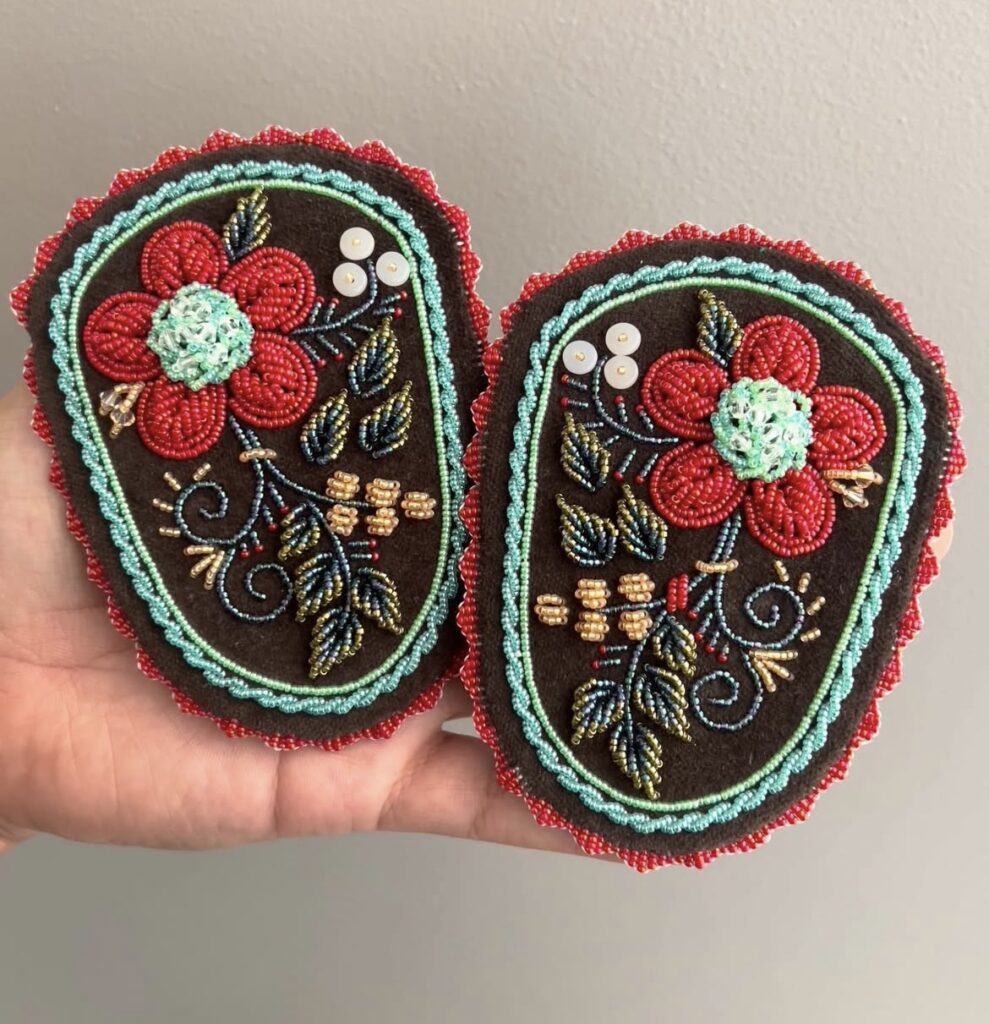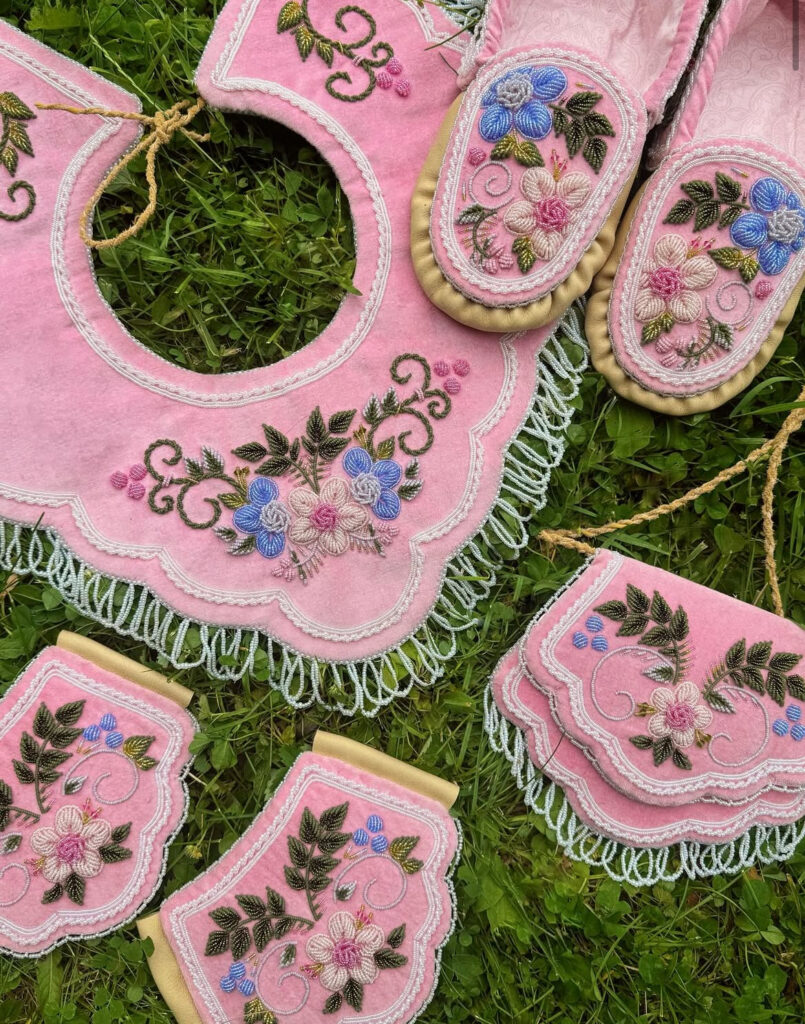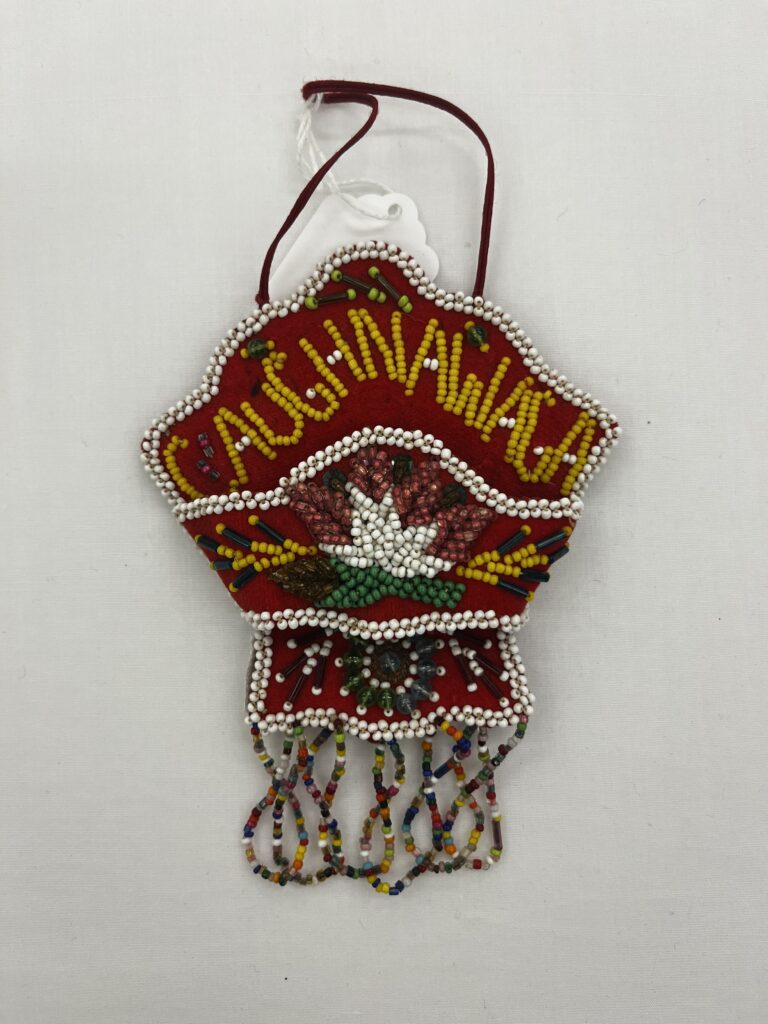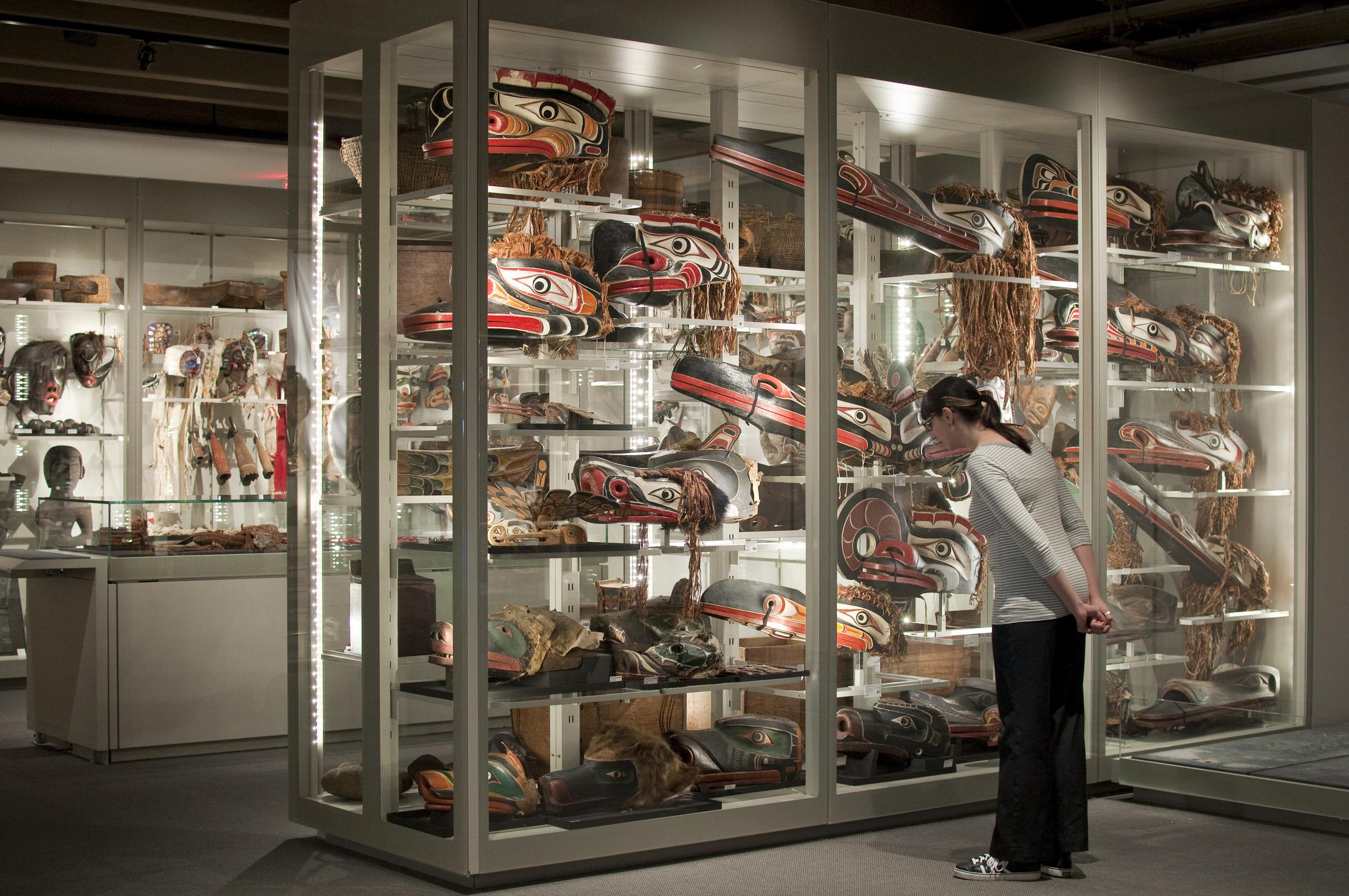The Indigenous Internship Program at MOA was developed by six Indigenous partners: the Musqueam Indian Band, the Squamish Lil’wat Cultural Centre, the Haida Gwaii Museum, the U’mista Cultural Society, the Nlaka’pamux Nation, the Coqualeetza Cultural Society, and the Museum of Anthropology at UBC. The program provides training opportunities for Indigenous people working in museums or Indigenous people who would like to do this kind of work. Funding for the Indigenous Internship Program is provided by the Andrew W. Mellon Foundation.
Our latest series of MOA Stories feature the fascinating research conducted by members of the Spring 2025 cohort during their internship.
Beadwork – More than a Reminder of Home
By Sarah Jacobs
Shé:kon, Sarah Sophia Kawenna’a Jacobs ióntiats, wakskaré:wake tánon Kahnawà:ke nitewaké:non.

The Indigenous Internship Program has been special to me because of the impactful learning opportunities that go beyond museum work. I am thankful to the people I have met, their support, and the knowledge they have shared. Moving to the other side of the country for this opportunity made me realize how special home is, and that’s when I felt homesick. Home is Kahnawà:ke located along the St. Lawrence River, in Québec, and is one of eight Kanien’kehá:ka (Mohawk) communities. We, Kanien’kehá:ka, are a part of the Six Nations Confederacy, also known as Haudenosaunee/Rotinonhsión:ni (“People of the Longhouse”). The Confederacy includes the Mohawk, Oneida, Onondaga, Cayuga, Seneca, and Tuscarora.

The cure to my homesickness became beadwork. Me and my fellow interns were in the collections storage room and sitting on a rack was a collection of several pieces of beadwork waiting for its final stages of accessioning. The collection was a recent donation of beadworks that were made to sell. When I glanced further, I noticed right away that “Caughnawaga” (Kahnawà:ke) was spelled out in beads on one of the pieces. There were many other Rotinonhsión:ni beadworks such as picture frames, pin cushions, and ornamental pieces with a small number that were made in Kahnawà:ke. That was when I wanted to know everything about these pieces and Rotinonhsión:ni beadwork so that I could feel a sense of home.

Beadwork was never a lost art form; Elder Geraldine Standup spoke about the history of its practice in Kahnawà:ke, saying “it has peaks and valleys” (“The Kahnawà:ke Beadwork Oral History Project,” 2020). After the introduction of glass beads through European trade, many Rotinonhsión:ni women beaded souvenirs and trekked to various locations to sell their work in Montreal, Québec City, Niagara Falls, and many more areas. Another “peak” of souvenir beadwork was during the period of Chief Poking Fires Indian Village in Kahnawà:ke, which first opened in 1936 and closed in the 1980s. The village was a summer tourist attraction for non-Indigenous visitors where Indigenous-made souvenirs were purchased, including beadwork. It was also a place for widows to receive a primary source of income. Women would bead all winter to sell their works in the summer. Beadwork is also made for non-commercial purposes, such as regalia worn for ceremonies.


Today, Kahnawà:ke flourishes with many well-respected beaders, including a close a friend of mine, Graysen Moses. Graysen skillfully produces raised beadworks that are vibrant in color and are well-praised, all while working full-time and attending school part-time. In 2022, I commissioned Graysen to make me a pair of moccasins for my college graduation and the outcome exemplified time and patience. Beadwork has become more than a reminder of home. I have grown a greater appreciation for women artists abilities to create fine delicate works. Most of all, I appreciate their time and energy. The energy put towards every threaded bead. The energy to bead all year. The energy to travel so they may sell their work. And the energy to keep going. Beadwork is one of many reminders of strong Rotinonhsión:ni women in past, present, and future.
Sources
“Remembering the Indian Village, story told by Watsenni:ne McComber.” Sharing Our Stories, Ionkwaká:raron. March 29, 2024. Edited by Aaron McComber.
“Geraldine Standup Interview” from “The Kahnawà:ke Beadwork Oral History Project.” Kanien’kehá:ka Onkwawén:na Raotitióhkwa Language and Cultural Center. July 29th, 2020.
Ahlberg Yohe, J. and Greeves, T. (2019). Hearts of our People: Native Women Artists. University of Washington Press.














